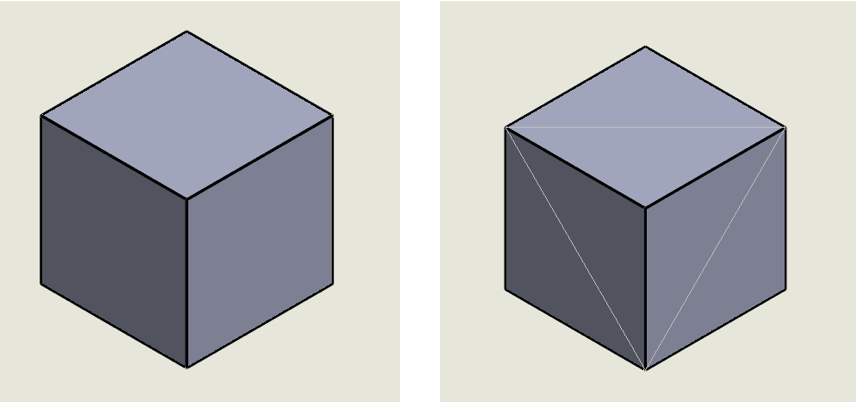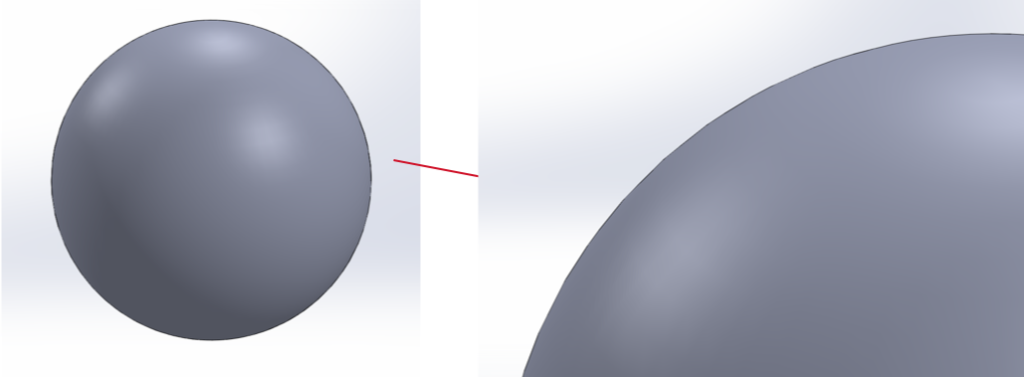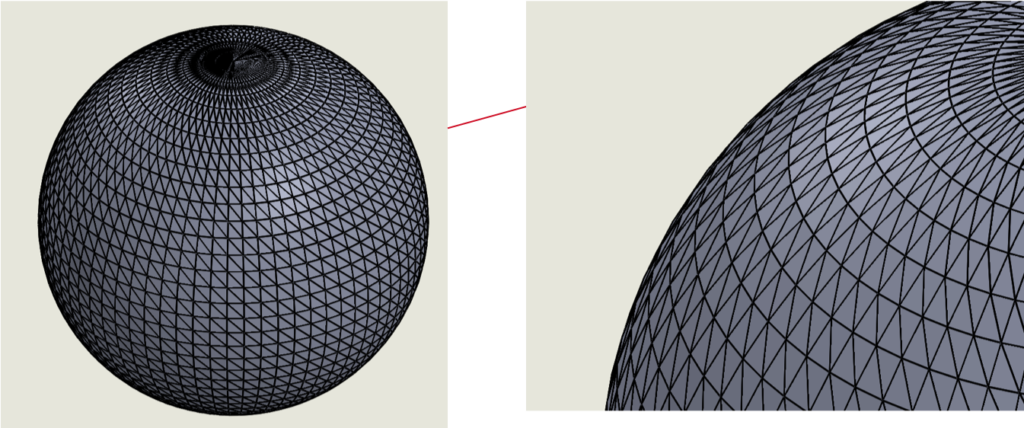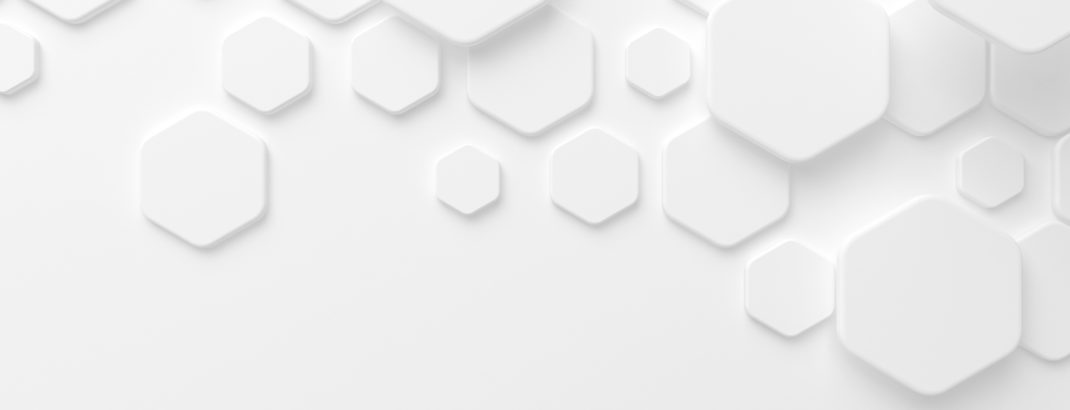We can accept the following file types (3DS, AMF, CATPART, IGS, IGES, JT, PRT, SAT, SKP, STP, STEP or STL), however the format accepted by most 3D printers is STL. You may prefer to send us the STL file, but if not our engineers will convert your design using optimum settings.
STL files describe only the surface geometry of a three-dimensional object without any representation of colour, texture or other common CAD model attributes.
The STL format approximates the surfaces of a solid model with a number of small triangles.
A simple square object, shown below, is simple for the STL format to translate and would convert it into a minimum number of triangles to approximate the surface as shown.

When converting organic-shaped objects into the STL format, consideration has to be given to how curved features will be translated into small triangles.
When an object with a curved surface is created in native CAD format the geometry represents the design intent. Take a circle for example, when we zoom into the part we can see that the curved surface is smooth, as intended by the designer.

If we compare this to the STL translated file, we can see that the surface is very different as the triangles have approximated the surface.
Each native CAD format has STL translation settings that can be optimised for 3D printing. If the settings are too high we end up with too many triangles, making the data file very large. If the settings are too low, we will be able to see triangles on the object when printed and the surface will be faceted rather than smooth. It is recommended to specify a medium resolution to limit the file size, but ensure the STL file represents the intended design.

Each CAD package has different recommended settings for converting files to STL. The Ricoh 3D team can support you in this conversion process, or simply send your raw data to 3DEnquiries@ricoh-rpl.com for our engineers to translate the file for you.
